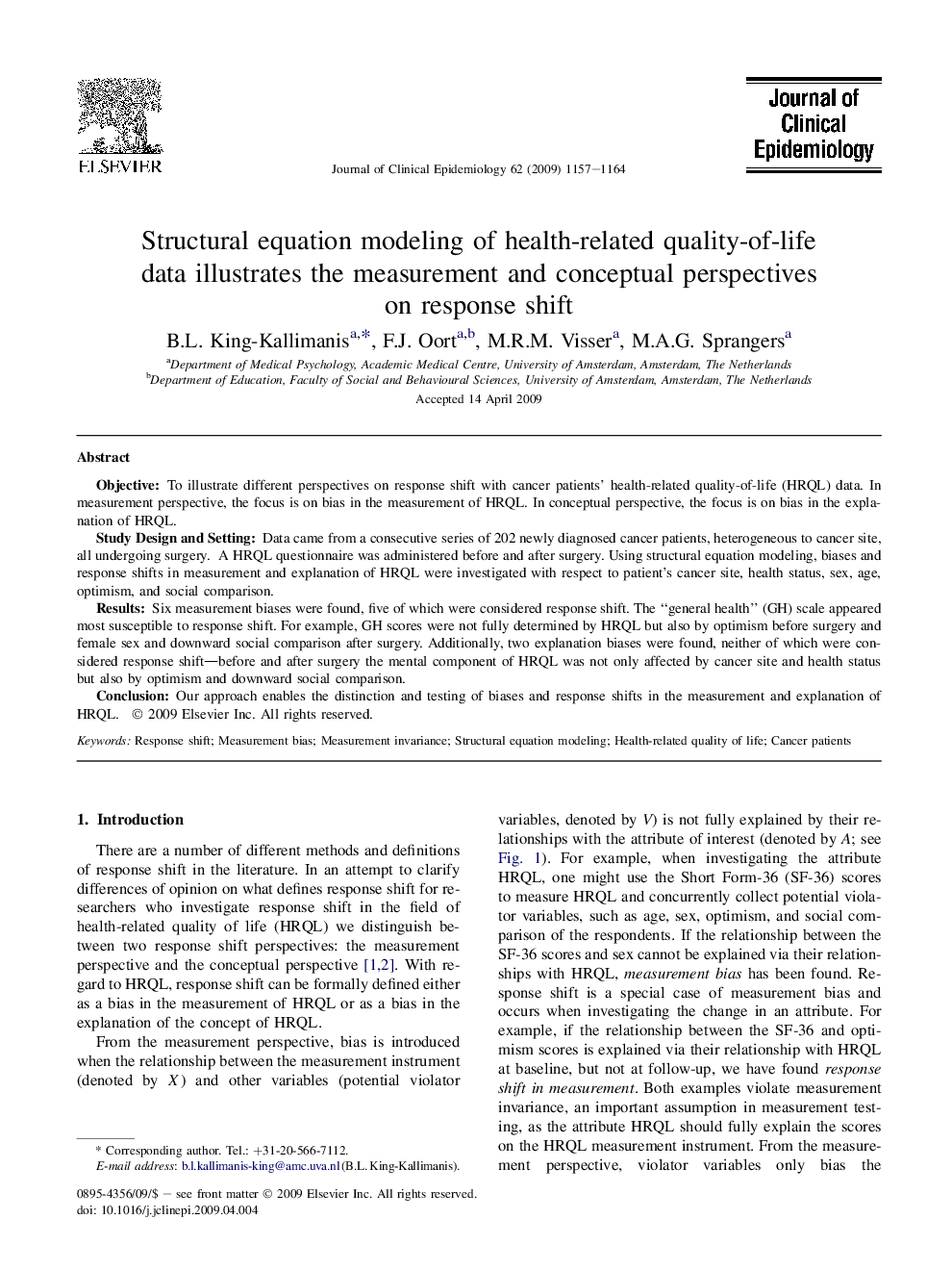| کد مقاله | کد نشریه | سال انتشار | مقاله انگلیسی | نسخه تمام متن |
|---|---|---|---|---|
| 1083392 | 950999 | 2009 | 8 صفحه PDF | دانلود رایگان |

ObjectiveTo illustrate different perspectives on response shift with cancer patients' health-related quality-of-life (HRQL) data. In measurement perspective, the focus is on bias in the measurement of HRQL. In conceptual perspective, the focus is on bias in the explanation of HRQL.Study Design and SettingData came from a consecutive series of 202 newly diagnosed cancer patients, heterogeneous to cancer site, all undergoing surgery. A HRQL questionnaire was administered before and after surgery. Using structural equation modeling, biases and response shifts in measurement and explanation of HRQL were investigated with respect to patient's cancer site, health status, sex, age, optimism, and social comparison.ResultsSix measurement biases were found, five of which were considered response shift. The “general health” (GH) scale appeared most susceptible to response shift. For example, GH scores were not fully determined by HRQL but also by optimism before surgery and female sex and downward social comparison after surgery. Additionally, two explanation biases were found, neither of which were considered response shift—before and after surgery the mental component of HRQL was not only affected by cancer site and health status but also by optimism and downward social comparison.ConclusionOur approach enables the distinction and testing of biases and response shifts in the measurement and explanation of HRQL.
Journal: Journal of Clinical Epidemiology - Volume 62, Issue 11, November 2009, Pages 1157–1164